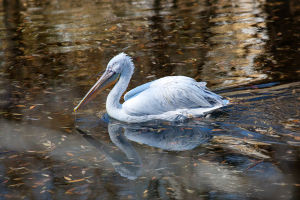Hey Lykkers!
Today, let's dive into the captivating world of the Sri Lankan leopard, a majestic and elusive big cat that calls the lush landscapes of Sri Lanka home.
Meet the Sri Lankan Leopard
The Sri Lankan leopard (Panthera pardus kotiya) is a unique subspecies found exclusively in Sri Lanka. Recognized for its tawny coat adorned with dark spots and rosettes, this leopard is the island's apex predator, meaning it sits at the top of the food chain without any natural predators. Males can weigh up to 170 pounds, while females are slightly smaller, averaging around 65 pounds.
Habitat and Distribution
These leopards are highly adaptable, inhabiting various environments across Sri Lanka, from dense forests and grasslands to tea plantations and even near human settlements. They are most commonly found in protected areas like Yala and Wilpattu National Parks, with Wilpattu hosting an estimated 144 leopards within its boundaries.
Behavior and Social Structure
Sri Lankan leopards are solitary creatures, with males maintaining territories that may overlap with those of several females. They are primarily nocturnal hunters but can also be active during dawn and dusk. Unlike some other leopard subspecies, they rarely store their kills in trees, possibly due to the lack of competing large predators in their environment.
Diet and Hunting Techniques
These leopards are opportunistic feeders with a broad diet that includes deer, wild boar, monkeys, and even smaller animals like birds and reptiles. They employ a stealthy approach, silently stalking their prey before launching a swift and powerful attack.
Reproduction and Lifespan
Breeding can occur year-round, with females giving birth to 2-4 cubs after a gestation period of approximately 90-105 days. Cubs are born blind and rely on their mother for protection and nourishment. They typically stay with their mother for up to two years before venturing out to establish their own territories. In the wild, Sri Lankan leopards live around 12-15 years, while in captivity, they can live up to 22 years.
Unique Vocalizations
One of the fascinating aspects of the Sri Lankan leopard is its vocal repertoire. They produce a variety of sounds, including growls, roars, and a distinctive "sawing" call that resembles the sound of a chainsaw. This unique call is often used to communicate with other leopards, especially during mating season.
Conservation Status
Currently listed as Vulnerable by the IUCN, the Sri Lankan leopard faces threats from habitat loss, human-wildlife conflict, and poaching. With an estimated population of fewer than 800 mature individuals, conservation efforts are crucial to ensure the survival of this magnificent species.
We hope this exploration into the world of the Sri Lankan leopard has been enlightening. If you have any thoughts or questions, feel free to share them with us. Let's continue to learn and appreciate the incredible wildlife that shares our planet.


